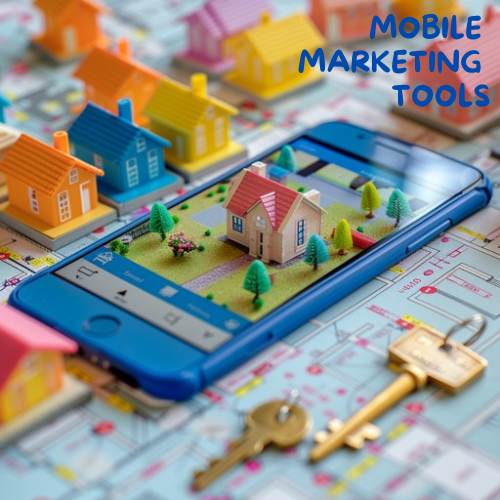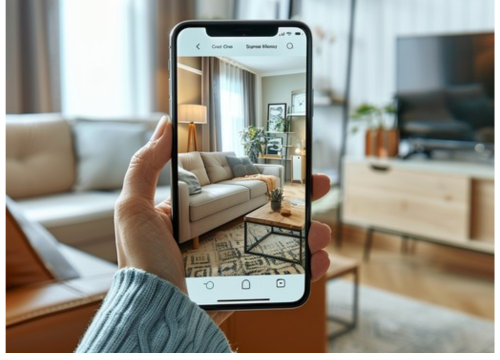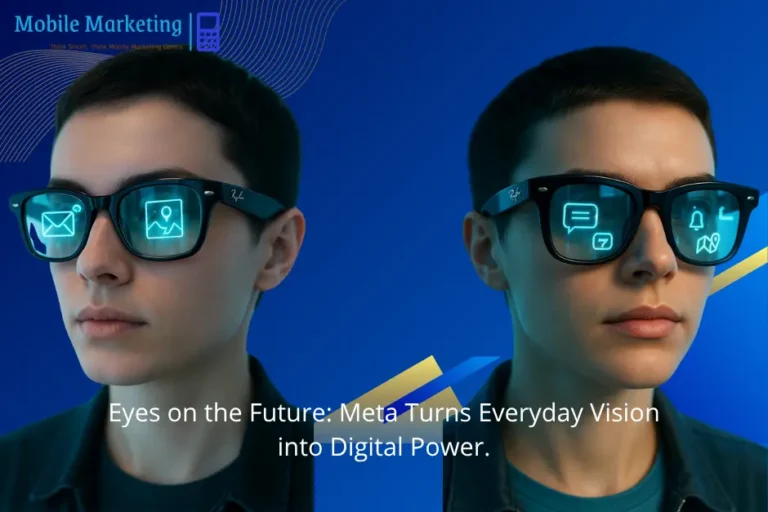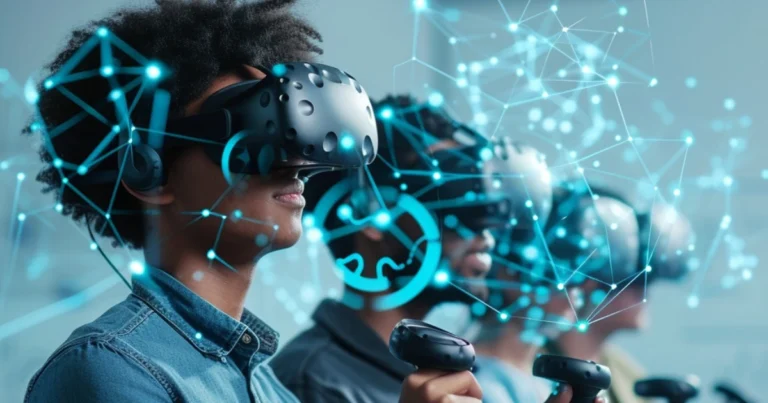The Promising Future of Mobile Commerce: Emerging Trends and How to Prepare Your Business for 2025

Mobile commerce (m-commerce) has revolutionized the way people shop, transforming the traditional retail landscape and paving the way for a future that is increasingly mobile. In this era, Mobile Commerce Trends are evolving rapidly, driven by advancements in technology, shifting consumer behavior, and the global reliance on mobile devices. With smartphones becoming an integral part of our daily routines, m-commerce is poised for even greater growth. As we look toward 2025, businesses must stay ahead of these trends to remain competitive and relevant in the marketplace. This article explores the Future of Mobile Commerce, dive into the latest m-commerce innovations and provides practical strategies for businesses to future-proof their operations.
Table of Contents
1. Understanding Mobile Commerce Trends
To lay the foundation for our discussion, it’s essential to understand the current state of mobile commerce. M-commerce refers to any transaction conducted through mobile devices, encompassing a wide range of activities from mobile banking and shopping to ticket bookings and digital wallets.
1.1 The Growth of Mobile Commerce
According to Statista, global m-commerce sales are expected to reach $4.5 trillion by 2025, comprising over 70% of total e-commerce sales. This surge is driven by the increasing use of smartphones, faster internet connections, and a growing preference for convenience among consumers. The COVID-19 pandemic has also accelerated the shift to mobile shopping, with more people turning to their phones for online purchases.
Table 1: Global M-Commerce Sales Projections (2020-2025)
| Year | M-Commerce Sales (in Trillions USD) | Percentage of Total E-Commerce Sales |
|---|---|---|
| 2020 | $2.91 | 52% |
| 2022 | $3.56 | 58% |
| 2025 | $4.5 | 70% |

1.2 Key Drivers of M-Commerce Growth
Several factors contribute to the growth of mobile commerce:
- Smartphone Penetration: The global smartphone user base is projected to surpass 6.8 billion by 2025, making mobile commerce more accessible.
- Convenience: Consumers prefer the ease of shopping and paying through their mobile devices, as it saves time and effort.
- Mobile-First Design: Businesses are optimizing their websites and apps for mobile users, ensuring a seamless shopping experience.
2. Emerging Mobile Shopping Innovations
M-commerce is continually shaped by emerging innovations that redefine the shopping experience. Staying updated with these trends is crucial for businesses aiming to engage and retain customers effectively.
2.1 Use of AI and Machine Learning
Artificial Intelligence (AI) and Machine Learning (ML) are at the forefront of transforming mobile shopping. AI algorithms analyze consumer behavior to provide personalized product recommendations, improving user engagement and boosting sales. For example, Amazon uses AI to suggest products based on past purchases, which has significantly increased conversion rates.
- Statistic: According to McKinsey, businesses that use AI-driven personalization see up to a 15% increase in sales.
- Case Study: Netflix uses machine learning to personalize content for each user, and this approach can be applied to m-commerce to customize product offerings.
How AI is Used in M-Commerce:
- Chatbots: AI-powered chatbots assist customers 24/7, answering queries and offering product recommendations.
- Predictive Analytics: Businesses use ML models to predict shopping trends and optimize inventory management.
- Voice Recognition: Voice commerce is growing, with Google Assistant and Alexa facilitating hands-free shopping experiences.
2.2 Augmented Reality (AR) for Virtual Shopping
Augmented Reality (AR) is another game-changer, allowing customers to visualize products in real-time before making a purchase. Brands like IKEA and Sephora have successfully used AR to enhance the mobile shopping experience. AR technology bridges the gap between physical and digital shopping, making online purchases more tangible and reducing the likelihood of product returns.
- Example: IKEA’s AR app lets users see how furniture would look in their space, helping customers make more informed decisions.
- Statistic: Research by Deloitte reveals that 64% of consumers believe AR enhances their shopping experience.

3. Emerging Mobile Payment Methods
Mobile payment methods are evolving rapidly, making transactions more secure and seamless. The shift toward digital payments is driven by consumer demand for convenience and businesses’ need for efficient transaction systems.
3.1 Mobile Wallets and Contactless Payments
Mobile wallets such as Apple Pay, Google Pay, and Samsung Pay are gaining widespread popularity. Contactless payment methods are particularly appealing due to their convenience and enhanced security. In addition, QR code-based payments have become commonplace, especially in regions like Asia, where mobile payments are a norm.
Statistic: A study by eMarketer found that over 60% of smartphone users in the United States will use mobile wallets by 2025.
Table 2: Adoption Rates of Mobile Wallets (2018-2025)
| Year | Mobile Wallet Users (in Millions) | Percentage of Smartphone Users |
|---|---|---|
| 2018 | 55 | 32% |
| 2021 | 78 | 45% |
| 2025 | 120 | 60% |

Benefits of Mobile Wallets:
- Speed and Efficiency: Mobile wallets eliminate the need to carry cash or cards, making checkouts faster.
- Security: They use encryption and tokenization to protect sensitive information.
3.2 Biometric Authentication for Payments
Biometric authentication methods, such as fingerprint scanning and facial recognition, are being integrated into mobile payment systems. These technologies add an extra layer of security and simplify the payment process.
Example: Mastercard has introduced biometric cards that use fingerprint sensors for verification.
3.3 Cryptocurrency Payments
Cryptocurrency is making its way into mobile commerce, with some platforms accepting Bitcoin and other digital currencies. While still in its early stages, crypto payments could revolutionize how we transact online, offering an alternative to traditional banking systems.
4. The Role of 5G Technology in Mobile Commerce
5G technology is set to revolutionize mobile commerce by offering ultra-fast internet speeds and low latency. As 5G becomes more widely available, it will drive significant advancements in how we shop and interact online.
4.1 Enhanced User Experience
With 5G, mobile apps will load faster, and data-heavy features like AR and live video streaming will function seamlessly. This improvement will make shopping on mobile devices more efficient and enjoyable.
Statistic: Qualcomm projects that 5G will generate $13.1 trillion in global economic output by 2035, with a significant portion coming from the m-commerce sector.
Applications of 5G in M-Commerce:
- Live Streaming: Retailers can host live shopping events with minimal lag, offering a more engaging experience for viewers.
- Interactive Ads: High-speed connections will enable more immersive and interactive mobile advertisements.
4.2 Expansion of IoT in Retail
5G will also facilitate the integration of the Internet of Things (IoT) in retail. Smart shelves, connected devices, and automated checkouts will become more common, enhancing both customer experience and inventory management.
Example: Amazon Go stores use IoT technology and 5G to offer a cashier-less shopping experience.

5. Optimizing Mobile User Experience
Creating a seamless and engaging mobile user experience is crucial for businesses looking to capitalize on m-commerce trends. User experience (UX) can make or break a mobile commerce strategy.
5.1 Mobile App Optimization
A well-optimized mobile app can significantly impact user engagement and conversion rates. Businesses should focus on features like easy navigation, quick load times, and secure payment options. Additionally, apps should be designed with accessibility in mind, ensuring that all users, including those with disabilities, can have a positive shopping experience.
- Best Practice: Use push notifications strategically to engage users without being intrusive.
- Case Study: eBay optimized its mobile app, resulting in a 15% increase in user engagement and a 10% rise in completed transactions.
5.2 Personalization Through Data Analytics
Data analytics allows businesses to understand customer preferences and behavior. By leveraging data, companies can deliver personalized content, offers, and product recommendations. This personalization increases the likelihood of conversions and builds long-term customer loyalty.
Example: Spotify uses data analytics to curate personalized playlists, a concept that can be adapted to e-commerce for tailored shopping experiences.
5.3 Security Measures
With the rise of mobile commerce, ensuring the security of user data is more important than ever. Implementing multi-factor authentication (MFA), encryption, and secure payment gateways can help build consumer trust. Businesses should also stay updated with the latest cybersecurity threats and adopt proactive measures to protect sensitive information.
Statistic: *According to Verizon’s Data Breach Investigations Report, over 70% of data breaches in retail involve payment card information.* Security measures must be continually updated to keep up with evolving threats and to ensure consumer trust.
6. Future Outlook: Preparing Your Business for 2025
As we move closer to 2025, businesses must adopt a proactive approach to prepare for the future of mobile commerce. Here are some strategies to consider:
6.1 Embrace Emerging Technologies
Businesses should invest in technologies like AI, AR, and 5G to stay ahead of the competition. Adopting these innovations early on can give companies a significant edge. For instance, augmented reality can be used not just for product visualization but also for immersive marketing campaigns.
Example: L’Oréal has launched AR-driven beauty apps that allow customers to try on makeup virtually, enhancing the online shopping experience.
6.2 Focus on Mobile-First Design
With the majority of internet traffic coming from mobile devices, a mobile-first design approach is no longer optional but necessary. Websites and apps should be optimized for small screens, ensuring quick loading times, intuitive navigation, and a seamless checkout process.
Best Practice: Test your mobile site across different devices and operating systems to ensure consistency and functionality.
6.3 Develop an Omnichannel Strategy
Consumers today expect a unified experience across all touchpoints. An omnichannel strategy integrates in-store, mobile, and desktop experiences, allowing customers to interact with your brand seamlessly, regardless of the platform they choose.
Example: Retail giant Walmart has successfully implemented an omnichannel approach, combining their physical stores with a robust mobile app and website.
6.4 Leverage Social Commerce
Social media platforms like Instagram, TikTok, and Facebook have integrated shopping features, making it easier for consumers to discover and purchase products directly from these apps. Businesses should explore these platforms to engage with younger audiences who prefer mobile shopping.
Statistic: A report by eMarketer predicts that social commerce sales in the United States will exceed $80 billion by 2025.
7. Conclusion
The future of mobile commerce is promising, with emerging Mobile Commerce Trends shaping the way businesses interact with consumers. From AI-driven personalization to 5G technology and advanced mobile payment methods, staying informed and prepared is essential. As m-commerce continues to evolve, companies that embrace innovation and prioritize user experience will have a competitive advantage. By adopting these advancements and optimizing for mobile-first consumers, businesses can not only survive but thrive in this rapidly evolving landscape. As we approach 2025, the time to act is now, and the opportunity to lead in mobile commerce is within reach.
By staying ahead of these trends and adopting new technologies, your business can lead the way in the world of mobile commerce.







2 Comments
Comments are closed.